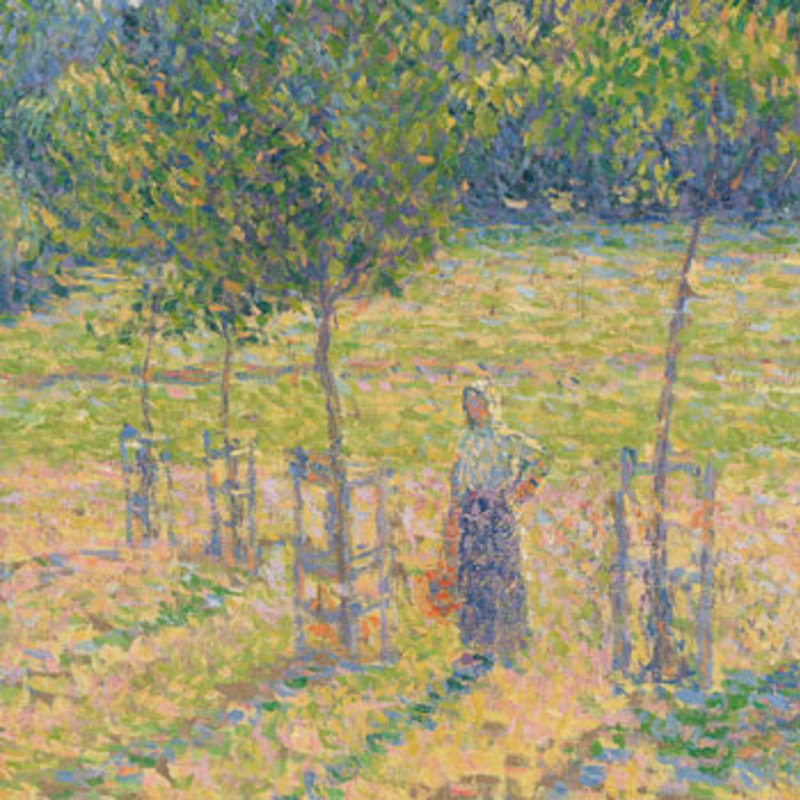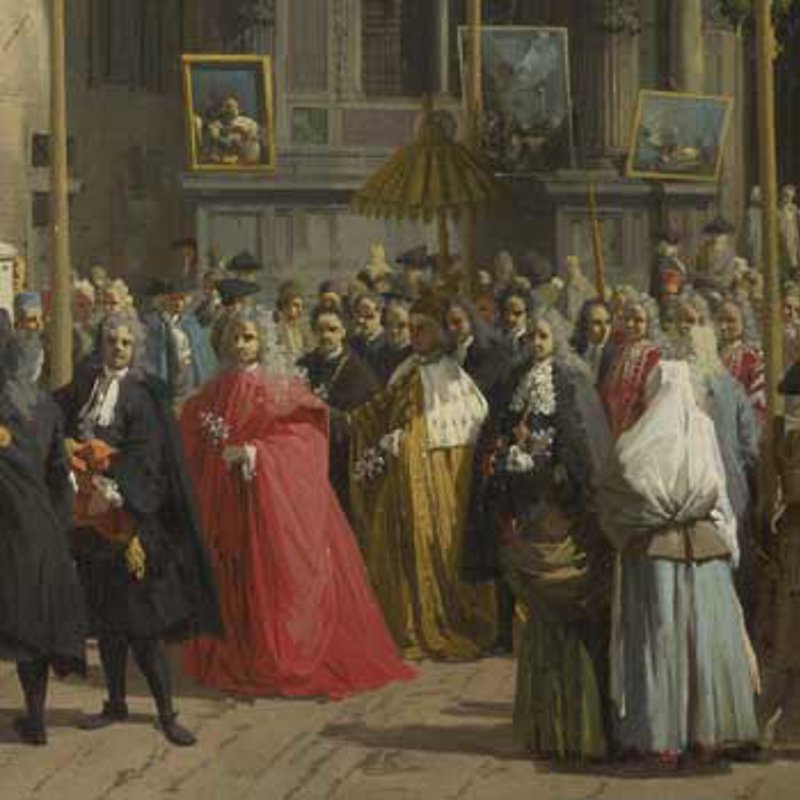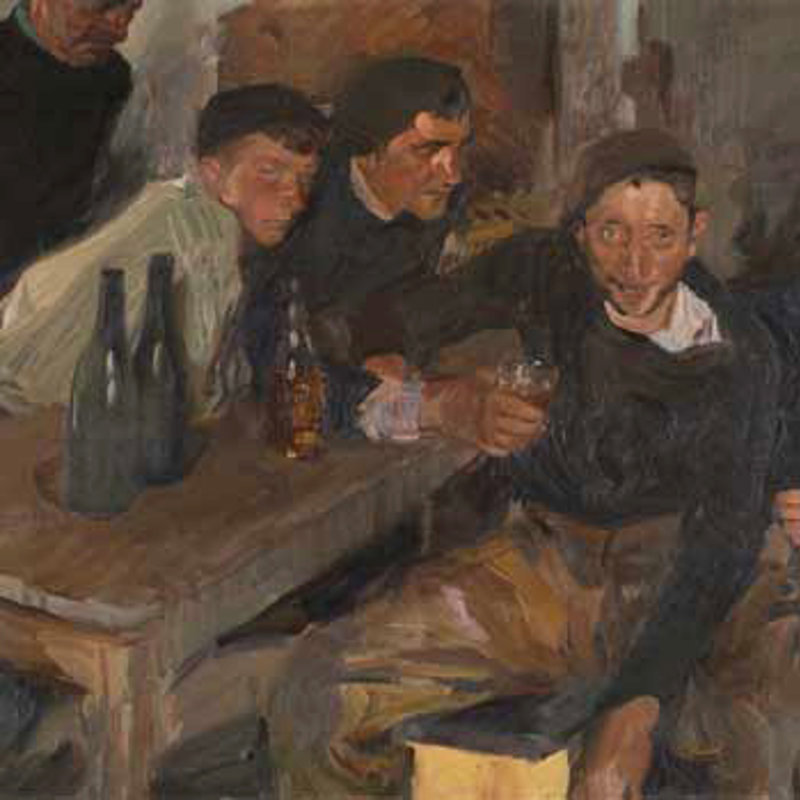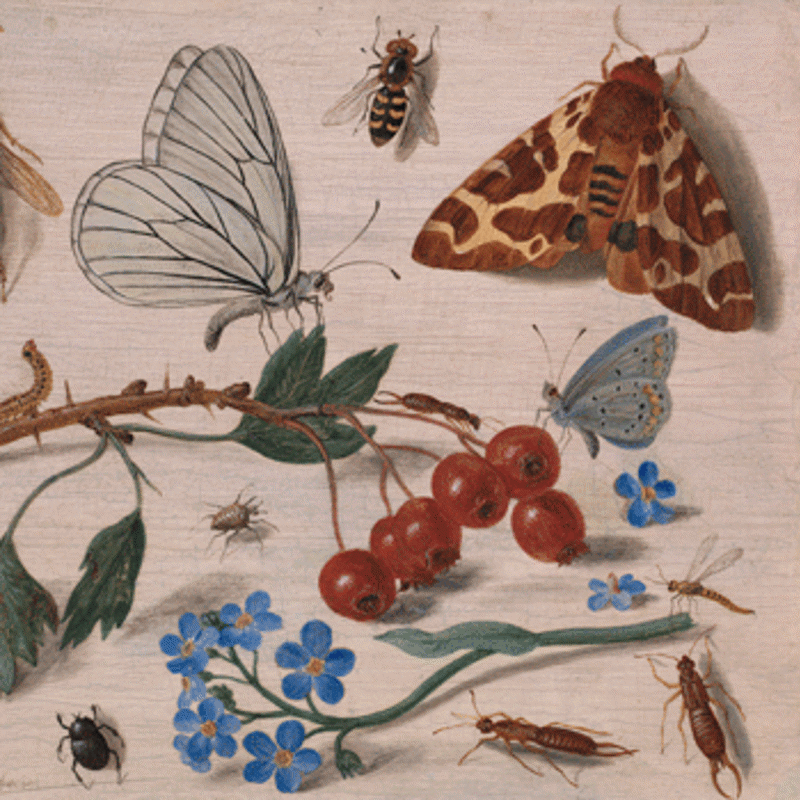With its soft, muted palette of silvery greens and blues, Corot’s 'Evening' appears drained of colour, suggestive of dusk and perhaps also of an image played in the memory.
After decades dedicated to painting ‘en plein air’ and with a keen focus on careful observation of nature, Corot, in his later years, turned to the comforts of his studio. Surrounded by his many sketches, he painted ‘souvenirs’ inspired by his memories of landscape and the emotions they raised. Rather than depicting a precise place, he creates an evocative scene, suffused with a sense of poetry and nostalgia.
'Evening' belongs to a series of four decorative panels painted by Corot in about 1858 for the studio of his friend and fellow artist, Alexandre-Gabriel Decamps, who lived in Fontainebleau. Together these paintings represent ‘Morning’, ‘Noon’, ‘Evening’ and ‘Night’, the cycle tracing the deepening light of the sky from sunrise to star-studded night. In each scene, foreground trees frame the view, pushing our eyes into the distance, a compositional device dating back to the landscapes of Claude Lorrain.
The images don’t tell a story, yet the figures in each landscape have a sense of belonging. In ‘Evening’, a figure wears what appears to be a dark brown monk’s habit with a hood. Two women are in a boat on the shoreline. One, in a white and pink dress, is sitting, while the other, in a white dress and yellow shawl, stands as she holds an instrument that may be a mandolin.
The women’s clothing, landscape setting and the presence of music suggest a fête galante, a type of picture showing elegantly attired men and women in a parkland setting which was particularly popular at the court of Versailles in the 18th century.
This hushed scene inspires meditation on the beauty of nature, our place within it, and the sense of wellbeing that can come from reconnecting with the natural world. Such meditations seem especially relevant today as we strive to protect the future of our environment.
Learn more about the technique, theme and history of Corot's 'Four Times of Day' series.















